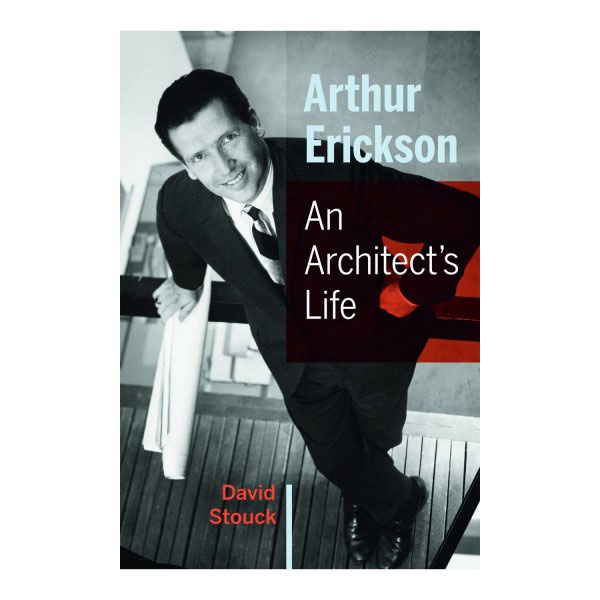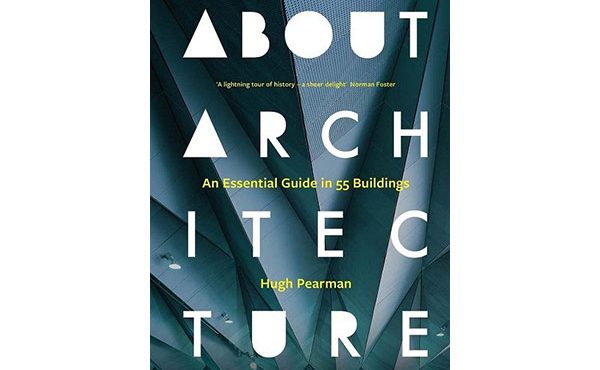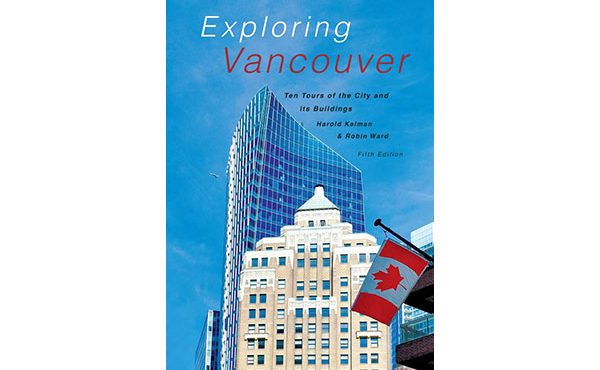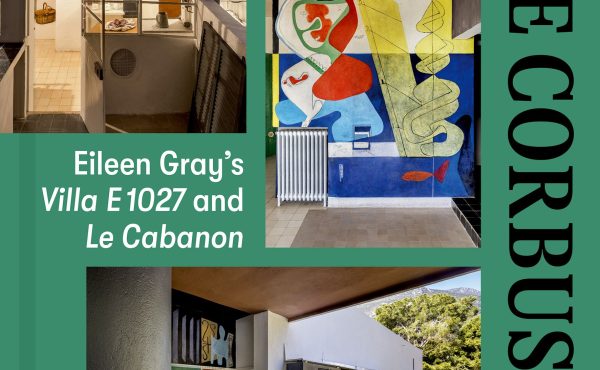
This full biography of Erickson, who died in 2009 at age eighty-four, traces his life from its modest origins to his emergence on the world stage. Grounded in interviews with Erickson and his family, friends and clients, Arthur Erickson is both an intimate portrait of the man and a stirring account of how he made his buildings work. Beautifully written and superbly researched, it takes a provocative look at the phenomenon of cultural heroes and the nature of what we call “genius.”
– From the Introduction
Author: David Stouck (Douglas & McIntyre, 2013)
It could be said that it is a biographer’s greatest task to take on a subject of legendary stature, as it is most certainly the case here for biographer David Stouck. Arthur Erickson: An Architect’s Life published by Douglas & McIntyre could very well be the most definitive work on Arthur to date, and for some time to come, such as it is 400 pages chocked full of detail after detail of the controversial architect’s life and career. Stouck has done well to combine several lessons of architectural history with a gripping tale of one man’s personal travails and tragedies. The triumphs of the book are already public knowledge, his built work – the Museum of Anthropology, Simon Fraser University, Robson Square, and many more of his works are revealed here in astonishing detail, often described in the voice of the architect himself.
As a bonus early on in the book, we are let in on the personal, and equally astonishing, stories of Arthur’s early childhood, education, and travels. While the story of his turning down a chance to work with Frank Lloyd Wright to travel is known to most, the wonderful episodes of his time at McGill architecture school in Montreal, his time serving overseas during the war, and his well-documented travels throughout Europe and Southeast Asia could be made into a book all on its own.
Close to ten years in the making, Stouck interviewed Erickson for the book’s material up to the time of his death, spending another four years following with continued research and interviews with the architect’s family and friends. The result is nothing short of miraculous – and though there is much here that has been said already, both that and what remains could now be said to be in this biography. Told over the course of twenty chapters, with his most well-known projects featured in six of them – the Filberg House, SFU on Burnaby Mountain, the University of Lethbridge, Robson Square, the Museum of Anthropology, and the Canadian Chancery – the remaining chapters are more biography than architecture lesson. But interspersed throughout remain the numerous other projects that Arthur completed.
What becomes clear early on is that Arthur was a prodigy, destined for greatness, and while excelling in his studies at school he developed an artist’s eye as a painter. Living in Vancouver’s Shaughnessy neighbourhood, an aunt that lived nearby was associated with a group of local art lovers who would eventually found the Vancouver Art Gallery, and who introduced Arthur to Lawren Harris while still in his teens. With the Group of Seven founder recently relocating to Vancouver in the early 1940’s, his belief in the school of theosophy would become a great influence on the young Arthur. Combined with his own readings of the poet Rainer Maria Rilke, this laid the foundation for the section of the book which is aptly named by Stouck as ‘A Portrait of the Architect as a Young Man.’
Before going to architecture school, Arthur, like his father before him, had served in the Canadian forces overseas, except that Arthur went east to India and not to the European arena where his father had gone (and tragically lost both his legs below the knees). In India, Arthur had the opportunity to go to Agra, where he visited the Taj Mahal, the first of many great architectural pilgrimages he was to take over the course of his life. For the war effort, Arthur studied Japanese with the rest of his unit in preparation for a mission for an obscure division of British Intelligence, in which their task was to broadcast demoralizing radio transmissions from inside India to the enemy troops in Japan. It was certainly a most curious introduction to Japanese culture for the 21 year old Arthur, a curiousity that would reveal itself more fully years later when he travelled to that country, after the war was over. In India, Arthur was also first exposed to Buddhism which, along with theosophy and the poetry of Rilke, was to have a profound influence on him for the rest of his life.
Following the war, Arthur was accepted into architecture school at McGill, where the curriculum was steeped in the high modernist energy of the time, and where he learned of the work of Le Corbusier, Walter Gropius, Mies van der Rohe, and Alvar Aalto. Frank Lloyd Wright had in fact been his initial inspiration for becoming an architect. Having seen a magazine at his aunt’s with Taliesin West on the cover, Stouck tells us the effect on Arthur was magical: “Immediately, everything came into focus; if it was possible to create such a work of art in architecture, I was going to become an architect.” Arthur had been going to the Vancouver School of Art, where he was trained by the likes of B.C. Binning and Jack Shadbolt, but his father, also a painter, discouraged him pursuing painting as a full-time occupation.
Seeing Frank Lloyd Wright’s school in Arizona would then set him on his way to a career in architecture, and upon his graduation he received several honours for his architectural thesis – a new National Gallery – including the Lieutenant Governor’s bronze medal as well as the aforementioned MacLennan Traveling Scholarship. Wright was going to waive the first year’s tuition for Arthur to join him at Taliesin, but as the young architect saw it, traveling was the means by which he would learn from the source itself – the living, breathing architecture of the world.
Stouck’s accounts of Arthur’s first impressions of several great buildings he visited are among the greatest highlights of the book. Some examples include his first time seeing the Great Pyramids in Giza, Hagia Sophia in Istanbul, along with a moonlight visit to the Parthenon, where family friends living in Athens had arranged a night visit for him to the Acropolis. And while many of us can recall our first visit to St. Peter’s in Rome, not so many could boast it was during Christmas mass in the company of the Pope himself, along with twenty thousand more under the nave. Arthur claims he was able to get to the front of the basilica to stand at the base of one of the columns holding up Michelangelo’s great dome. The power of what he witnessed most certainly would’ve moved him for the rest of his life: “It was a pageant such as I had never experienced before, an enactment of something as ancient, as inevitable as the dilemma of life and death, of some positioning of the human spirit, some superb reaching of the human imagination.”
A later trip to the East, including stops in Japan and Bali, would round out his architectural erudition abroad. Returning to Vancouver to work, and after several failed attempts to work for other prominent architecture offices in Vancouver – including McCarter & Nairne and Thompson, Berwick & Pratt – Arthur would meet Geoffrey Massey to design and build projects of their own. The standalone chapter on the Filberg House is a whole story in itself, including the tragic accidental death of the client before the house’s construction was complete. This was also the time in Arthur’s life when he found his house in Point Grey, the humble ‘garage’ that would be his home for the rest of his life. The following chapters of the book represent what are most certainly the triumphs of his early career, the wonderful houses in West Vancouver and its environs for which he would become known, culminating to his plan and execution of the Simon Fraser University, completed with his partner Geoff Massey in 1965.
The influence of Japanese architecture was already apparent in his work by this time, certainly in his use of concrete as a primary building material, seen at SFU, in his MacMillan Bloedel building, and the University of Lethbridge. By the time Arthur designed Robson Square in the early 1970’s, he was being recognized around the world, with his architecture having been featured at both Expo ’67 in Montreal and Expo ’70 in Osaka. But it would be the University of British Columbia’s Museum of Anthropology that would be Arthur’s most sublime building. It is a shame that during his lifetime, the University felt they could not fill the reflecting pool on the building’s western façade. This is an oversight which has now been corrected, becoming a living memorial for Erickson.
The museum would, however, prove to be the end of his upward trajectory, as tragedy after tragedy began to befall him from this point on, beginning with his getting the commission from Pierre Trudeau to do the Canadian Chancery in Washington D.C. When Arthur failed to get shortlisted for the job, he is reputed to have called the prime minister, a personal friend by then, and convince him to give him the project. Stouck refers to this infamous project as the moment when everything went sour, losing many coveted jobs as a result of the scandal, including the National Gallery that went to Moshe Safdie.
At this point of the book, Stouck does a remarkable job of going back and forth between Arthur’s personal woes and his architectural disappointments. After closing his office in Toronto, the excesses of his personal life in Los Angeles would eventually lead to his having to close that office, ending with his declaring bankruptcy in 1992.
How was it possible that such a legend could’ve fallen so low?
The second-to-last chapter of the book – Bankrupt – is a financial Greek tragedy, as told mostly through a Forbes article written by Toronto architecture critic Lisa Rochon. If the actual story of his bankruptcy is not enough to move one to tears, the suicide of his lifelong companion, which happened the year before, most certainly will.
As a denouement to this harrowing fall from grace, the closing chapter points out that his career did continue after 1992, and Stouck brings us up to the present day. The work which he realized along with his former employee Nick Milkovich includes the wonderful Waterfall building near Granville Island as well as the Tacoma Glass Museum in Washington state – which the author refers to as his most important project realized in his later years.
Stouck also introduces us on page 382 to Cheryl Cooper – the former director of the Arthur Erickson Home and Garden Foundation – who would establish the Arthur Erickson Conservancy with him. Stouck also notes that it was Cheryl who was instrumental in Arthur’s professional and personal life in his final years.
Arthur Erickson: An Architect’s Life is a magnum opus, and could be subtitled ‘Everything You Wanted to Know About Arthur Erickson but Were Afraid to Ask.’ While three blocks of black and white photos accompany the text, I highly recommend having the recently published TUNS Press book Arthur Erickson: Layered Landscapes, edited by Linda Fraser and Michelangelo Sabatino, as a companion reference while reading the book, as it fills in the visual gaps with drawings done in the hand of the architect himself, often of the houses and public buildings being discussed.
Five years ago, a memorial occurred for Arthur at Simon Fraser University’s Convocation Mall on what would’ve been his eighty-fifth birthday. Attended by close to a thousand people, long time fellow UBC professor Abraham Rogatnick (who passed away in August of 2009) gave a stirring eulogy:
Arthur was the first person to greet me upon arrival in Vancouver 54 years ago… Immediately I knew I was in the presence of someone rare, and over the years I marveled at the absence of self-importance he demonstrated, even as his creative vision brought triumph after triumph. To him it was the poetry, not the poet that mattered. I also came to recognize the nobility, courage, and stoicism with which he faced the trials, sorrows, and ironies of his public and private life.
Mr. Stouck, whose previous work includes a biography on Sinclair Ross, has given us a thorough and honest account of Arthur as the artist and architect, as well as the man who was subject to all the same fortunes and foibles as the rest of us. As such, it is an absolute must read for architects, students, educators, university administrators, and clients-to-be, as it offers a glimpse of greatness mixed with a lesson on hubris. Arthur Erickson was our Prometheus, and as architects, our world is and will remain a better place because of what he was able to accomplish.
***
For more information on Arthur Erickson: An Architect’s Life, visit the Douglas and McIntyre website.
**
Sean Ruthen is a Vancouver-based architect and writer.




